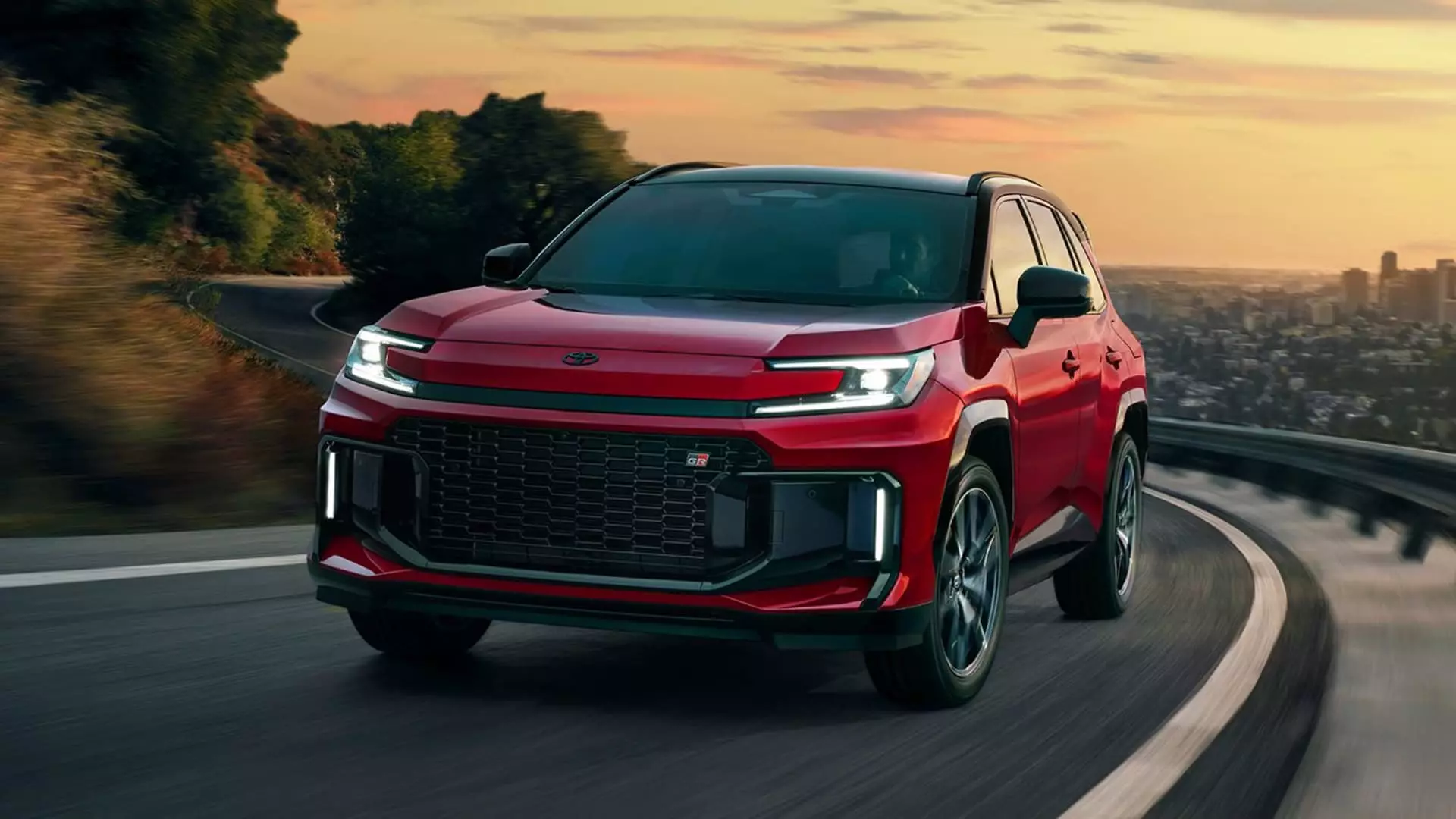In a groundbreaking announcement, Toyota has decided to reshape the landscape of the American SUV market by exclusively offering the bestselling RAV4 as a hybrid model for its 2026 redesign. This significant transformation symbolizes a pivotal moment not just for Toyota, but for the entire automotive industry, as it embraces hybrid technology over traditional gasoline engines. While the decision appears progressive, it raises pressing questions about the balance between innovation and customer expectation.
Unlike many automakers racing towards an all-electric future, Toyota has long championed hybrid vehicles, becoming a trendsetter with the launch of the Prius back in the late 1990s. The company’s commitment to hybrid models serves as both a benchmark for performance and an answer to mounting fuel economy regulations. With electrified vehicles accounting for 43.1% of Toyota’s sales in 2024, the shift to an all-hybrid RAV4 seems to resonate with a consumer base that values not just sustainability, but practical performance as well. But is this enough to cement Toyota’s place as a leader in an industry hungry for change?
Consumer Demand and Industry Trends
Toyota’s decision to make the RAV4 exclusively hybrid is a direct response to consumer preferences, which suggests a significant shift in mindset. David Christ, head of the Toyota brand in North America, revealed a remarkable uptick in hybrid sales, with RAV4 hybrids accounting for 44% of the model’s sales last year. This statistic is indicative of growing demand for vehicles that strike a balance between traditional driving experiences and eco-friendly efficiencies. It leads one to wonder: have automakers underestimated the market’s appetite for hybrids?
With hybrid vehicle sales seeing a record-breaking 20% share of new car and truck sales in the U.S., it’s apparent that consumers are slowly breaking away from the narrative that electric vehicles are the sole path to sustainable transportation. They are opting for vehicle technologies that combine the best of both worlds. However, the transition poses its own challenges, particularly with the ongoing normalization of an all-electric framework pushed by government regulations and environmental advocates. Can Toyota successfully navigate this regulatory maze while keeping consumer sentiment on their side?
Challenges Beyond the Showroom
The ambitious pivot toward an all-hybrid RAV4 has not come without its share of hurdles. The disruptive nature of global trade policies, particularly the 25% tariffs imposed on imported vehicles by the Trump administration, looms large over the automotive sector. Toyota, while producing some of its models domestically in Kentucky, still relies on a substantial number of RAV4s imported from outside the United States. This scenario creates a precarious balance, as the company strategically plans to ramp up production at its Kentucky plant while also bracing for potential tariffs.
Mark Templin, chief operating officer of Toyota Motor North America, acknowledged the issue, citing the company’s commitment to adapting its production strategies. However, the uncertainty in trade negotiations adds to the stress of managing evolving consumer demands. In an industry that thrives on predictability, the “worst thing for an industry is uncertainty,” as Templin aptly put it.
The Broader Implications for Electrified Vehicles
As the automaker transitions its bestselling RAV4 into an exclusive hybrid lineup, the decision speaks volumes not just about the company’s focus on sales but also about the larger implications for the planet. The broader automotive landscape is witnessing an inflection point where emissions and sustainability have reached the forefront of societal debate. Other automakers, still desperately trying to catch up in the hybrid realm while committing vast resources to all-electric technology, must take heed of Toyota’s calculated approach.
While hybrids might be seen as a stopgap solution for an industry in flux, they provide an immediate answer to consumer concerns over range anxiety and home charging infrastructure—issues that have plagued purely electric vehicles. Still, one must ask: will hybrid models serve merely as transitional vehicles, or can they thrive in a future where sustainability is paramount?
Ultimately, the move to position the RAV4 as an exclusively hybrid model represents not just a shift in product offering but a statement of intent. It indicates a thoughtfully engineered strategy that acknowledges customer desires, environmental responsibilities, and complex economic realities. As Toyota embarks on this journey, the automotive sector will be watching closely—hoping that this bold step leads to a more sustainable and consumer-friendly future.


Leave a Reply